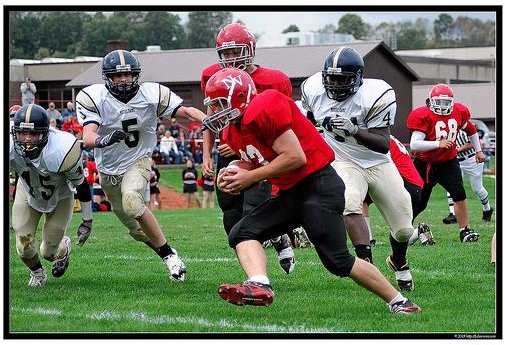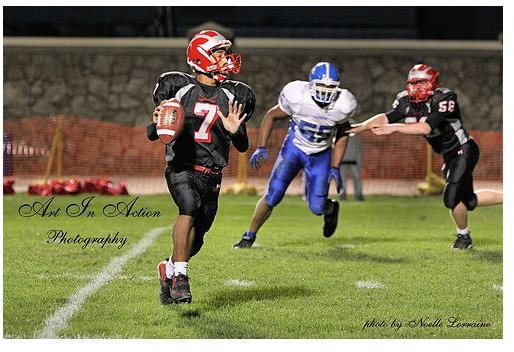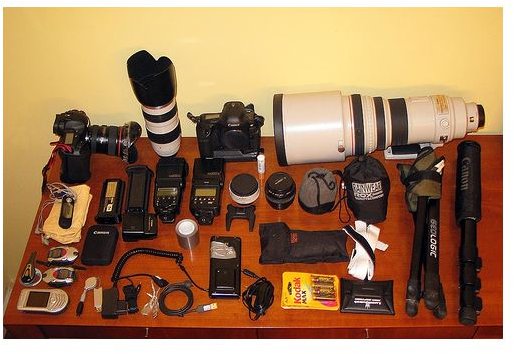How to Photograph Football - Camera Gear
Introduction
Photographing football, like any other sport or event, can be a challenge if you are not very familiar with the game. When the action gets going, there is little time to react so you need to know exactly where the action is moving to so you can be ready to get the shot.
Shoot With the Right Gear
Shooting sports can get quite expensive. To do it well, you will need a relatively fast camera that has numerous auto focus points (AF points), a high frame rate, and one that can handle high ISOs well (3200 ISO and beyond). Then, there’s the lenses, you’ll want a long focal length with a wide aperture to separate your subject from the background and give it pop. These two items can easily run into the tens of thousands and doesn’t even cover a second body and lens for backup and wider shots if you are shooing football professionally. For high school games, you can get away with a more modest APS-C body (Nikon D300s, Canon 7D, or Sony A700 equivalent) and a fast telephoto zoom lens that you may already own. If your camera doesn’t have a high frame rate, don’t worry. You will still be able to achieve killer shots, just less of them. The number one lens I would recommend is a fast-focusing 70-200mm F/2.8 or similar equivalent. You could probably get by with an F/4 variation (if you shoot Canon or Sony), but this means using a one stop higher ISO to compensate for the darker lens. It is best to stick with first-party lenses because you can take advantage of they have fast ultrasonic focusing motors (Canon’s USM, Nikon’s AF-S SWM, and Sony’s SSM) that are accurate and track movement well. If your budget restricts you to third-party alternatives like Sigma and Tamron, consider the Sigma for it’s HSM ultrasonic motor (still not as fast as first-party lenses) over Tamron’s slow micromotor. With the Tamron, shots are still possible, but you may find yourself frustrated at missed shots (due to the slow focus) or resorting to manual focus. Okay, so enough about the gear, let’s get to shooting with it.
Photo by: Luis Vieira
Camera Settings
- Set your camera to continuous auto focus to track the motion (continuous servo for Nikon, AI Servo for Canon, and AF-C for Sony)
- Use aperture priority, especially in changing light. Use the widest aperture available (lowest F stop number) to achieve fast, shallow DOF shots.
- Keep your shutter speed at about 1/500 of a second or faster to freeze the action (note that at these fast shutter speeds, a tripod or monopod will not help steady your shot)
- Start at 800ISO and adjust from there to minimize noise while freezing the action
Come Early and Stay Late

Part of being prepared is to get to the stadium/field early to capture the teams warming up and crowd arriving and staying late to capture the players walking off the field. When you arrive, scout out a few locations you can shoot from. Ask if you can shoot down on the field to get closer and shoot at ground level. This will give you better access to the players (and coaches) on and off the field, getting you close to the action. Once you situate yourself, begin taking pictures of the crowd, festivities, and players practicing. Make the most out of the remaining daylight.
Photo by M. Pastor
Get in Position

It is important to always get ready for the next play and follow the ball. The best positions to stand are on the far sides of the fields where you can catch the action coming towards you (running backs going for a touch down or wide receivers making a catch). Another advantage of being near the end zone is that you can snap the pictures of touchdowns and the celebration from players.
Photo by jdanvers
Focus On Your Subject

This goes without saying, but focus on your subject’s eyes to draw your viewer’s attention into the action and athlete. When the play is happening, move the nearest AF point to the subjects eye and follow the player. Using the center AF point may either result in a misfocused shot (if the depth of field is not great enough to include the player’s eyes) or a poorly composed shot since you do not have time to recompose after focusing. This is especially where having a higher-end camera helps to quickly focus on a variety of points.
Photo by Noelle Lorraine Photography
This post is part of the series: Sports Photography Tips & Techniques
In this series, we’ll look at how to photograph various types of sports. Camera settings, lighting and equipment are just a few elements that will vary depending on which sport you are trying to photograph. Learn tips and techniques that will help you capture the best action sports photography!
